Monthly Archives: June 2024
Islanders Trading for Jesperi Kotkaniemi Is a Risk Worth Taking
Frank Seravalli Clarifies Comments on Canucks Fans and Pettersson’s Injury
‘You have to process so much’: The job starts on the wall for NHL wingers
It's May 10, late in Game 3 of the tied Florida-Boston series. The Panthers lead 4-2, but the Bruins are pressing with an extra attacker on the ice. Boston calls a timeout to rest its top players and draw up a play for the next faceoff.
The reset is all for nothing.
Florida wins the draw and rims the puck up the left side of the zone. Winger Matthew Tkachuk gains possession above the hash marks. Facing the wall and on his backhand, Tkachuk rotates his body, briefly handles the puck, then slides it through an outstretched defender and onto a familiar stick. Teammate Sam Reinhart hustles down the ice and deposits the puck into the empty net.
Margins are razor-thin in the NHL postseason, and Reinhart's victory-sealing goal doesn't materialize without exemplary "wall play" from Tkachuk.
Wall play (also known as board play) is a catch-all term for the many split-second decisions a forward makes when he and the puck are near or on the half-wall. What transpires in those quick, easy-to-miss sequences tends to be the difference between a successful defensive-zone exit and a botched one.
Wall play is often overlooked because it's the unglamorous, connecting piece of a typical breakout - first pass, wall play, zone exit. In detail-oriented team environments, though, strong wall play can help a player earn a coaching staff's trust. It impacts ice time and role, especially among wingers.
"The guys who master it are the ones who stay in the league," Maple Leafs winger Matthew Knies said in an interview late in the regular season.
Cole Perfetti of the Jets added: "A lot of the game is spent on the walls. More than you'd ever imagine or ever think coming into this league."
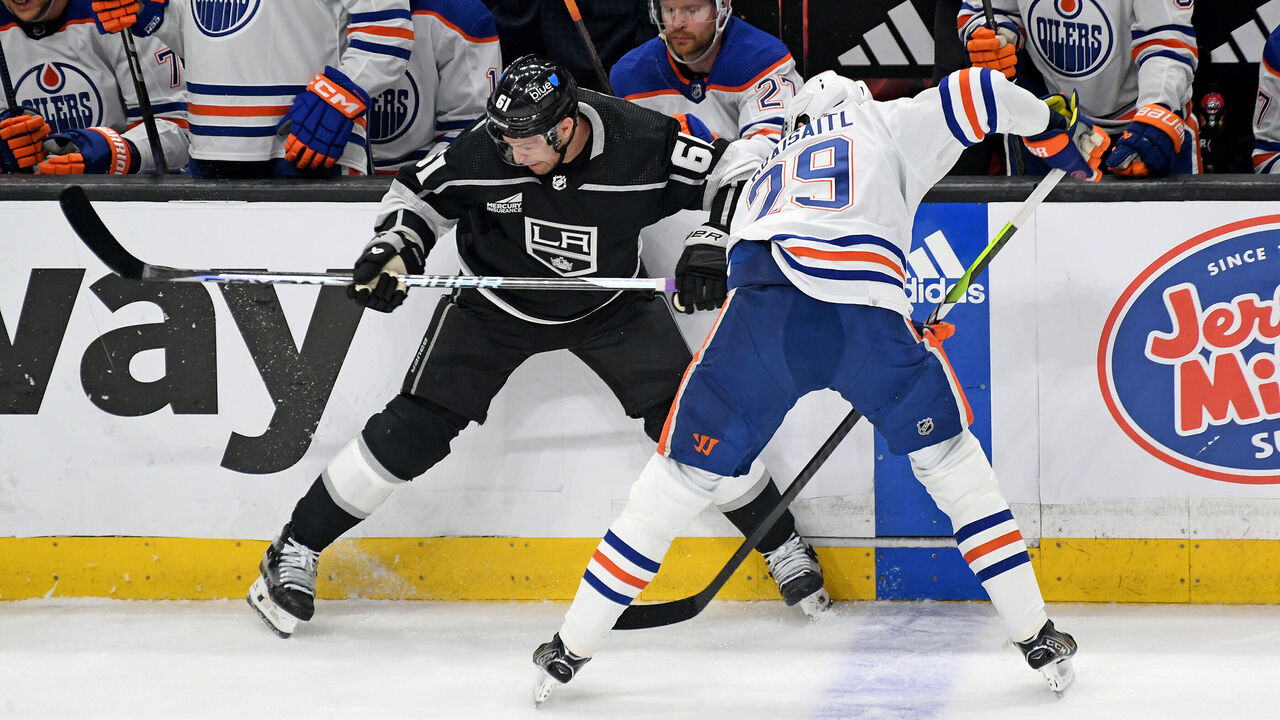
Former NHL head coach Dallas Eakins noted last May that "80% of the puck time" in an average game "is within three feet of the wall." Eakins encouraged coaches everywhere to prioritize wall-play drills in practice. So much value is waiting to be unlocked, he said.
Jon Goyens, a longtime minor and junior hockey coach now analyzing the NHL from a bench boss' perspective for Daily Faceoff, works with pro players every summer. Last year, a young NHLer showed him the homework his team assigned for the offseason. "Improve wall play" was high on the to-do list.
Goyens uses a sticky acronym to teach wall play: LSD - look, skate, decision.
With that acronym and other insights from Goyens and a handful of NHL forwards as our guide, let's dig into the nuances of defensive-zone wall play.
Step 1: Look
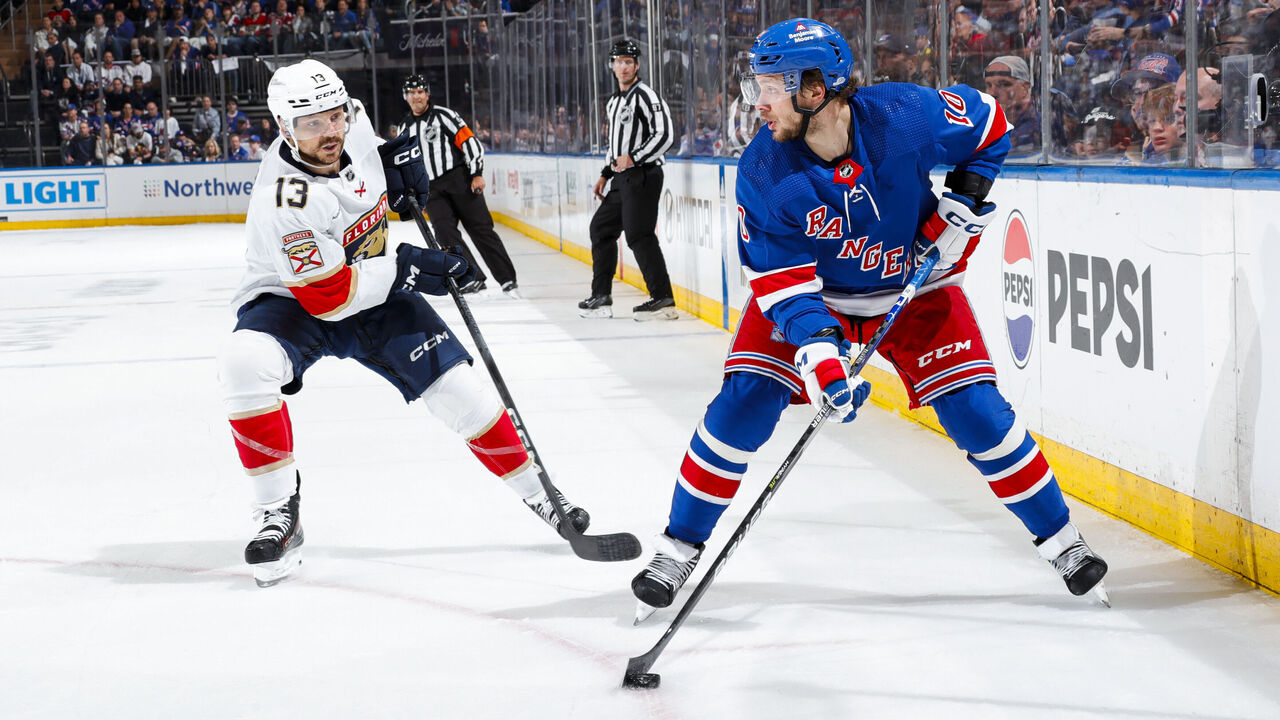
Effective wall play begins with a calculation.
As the puck enters the winger's orbit, he must scan the ice to take a mental picture of the environment. The aim is to accurately predict what will happen next.
"You have to be shoulder-checking to see where your teammates are and where the pressure's coming from," Winnipeg's Kyle Connor said. "I find the degree of difficulty with wall play really increases as the pressure increases."
That pressure tends to be applied by two players: a defenseman skating down the wall from the blue line and a forward skating to the wall from the middle. Pressure can lead to physical contact, and the winger's in a vulnerable spot.
"You have to process so much," Toronto's Bobby McMann said. "You have to process the speed of the puck, where it is on the wall. Where your guys are, especially the center. Where their guys are, if the D-man is pinching, if you can get body positioning on him. You're processing all of these things in, like, half a second. If it's a really hard rim around the boards, that's a lot for the brain."
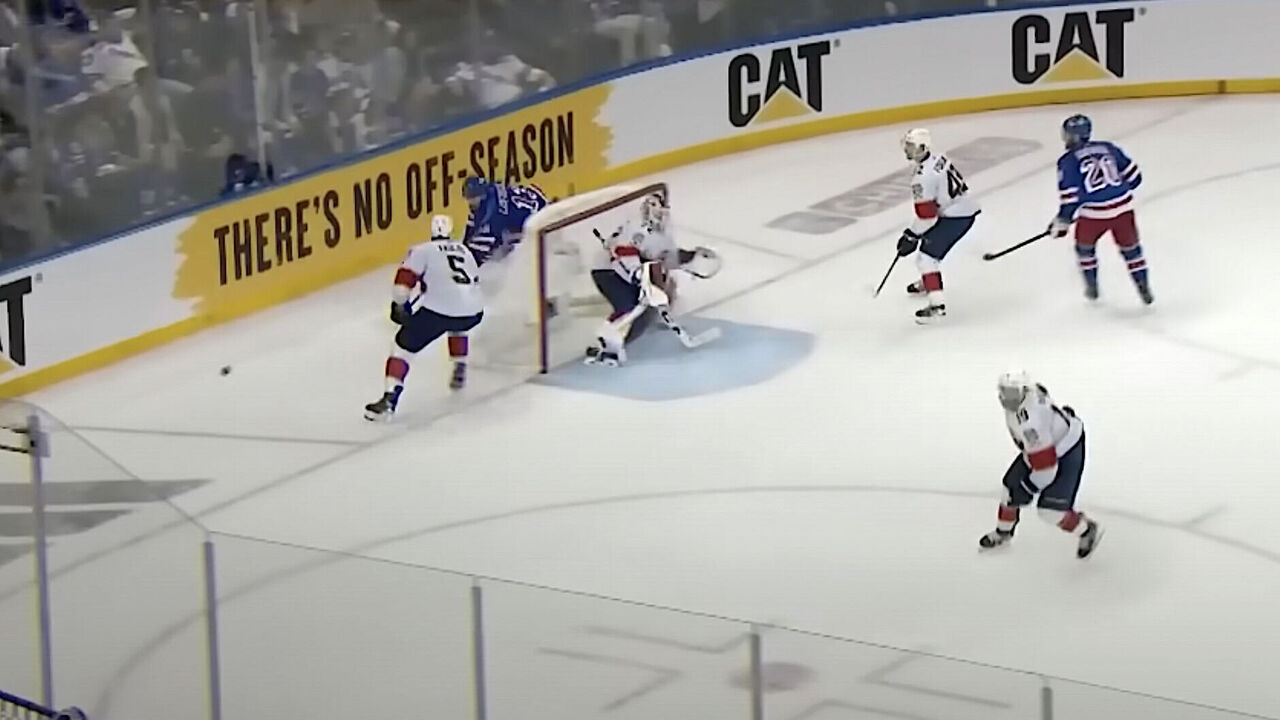
The screenshot above is from Game 3 of the Eastern Conference Final. It shows Tkachuk (bottom right) checking on the point while he chases down a loose puck. He scans so early in the sequence - the puck's below the goal line and he's in the slot - because he wants time and space to devise a plan.
Tkachuk glances at the puck, looks at the blue line again, shoulder-checks, then finally makes his retrieval. A chip up the wall leads to an exit by Sam Bennett, who sidesteps a defender and sends the puck into an empty net.
Unsexy, blue-collar work from Tkachuk. Mission accomplished for Florida.
Step 2: Skate
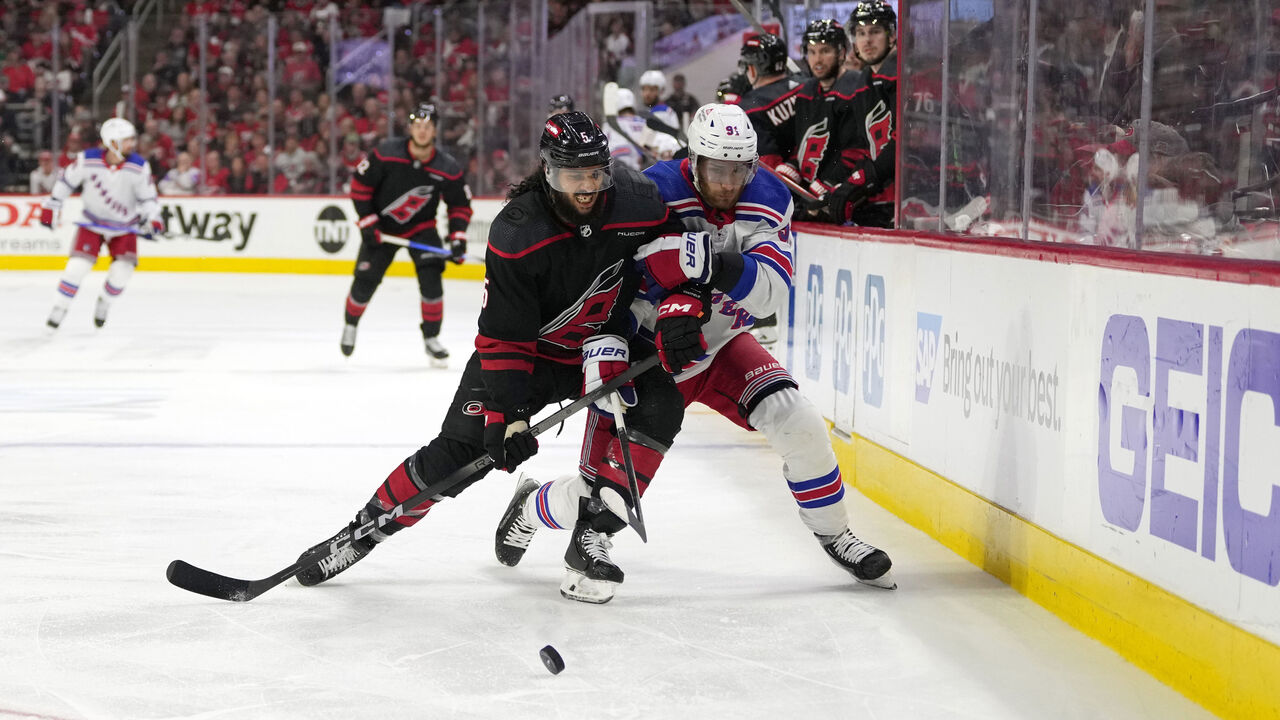
Tkachuk's scanning is useless if he doesn't efficiently move toward the puck.
There's a difference between approaching the wall with speed and crashing into it with speed. "The best wall-play guys will skate very quickly to within three, four, maybe five feet of the wall. That way they're there nice and early," Goyens said. "Then they'll use that gained time and space to maneuver."
Another important variable: where the winger meets the puck. Meeting it at the hash marks or lower invites complications like extra bodies and sticks and more ice to cover. Ideally, the winger meets the puck above the faceoff circle.
Here's Wyatt Johnston, a brilliant young player for Dallas, meeting the puck close to the blue line to set up the opening goal in Game 2 of the West Final:
It's important to be in sync with the center during this "skate" step.
"You have to listen for your center and act on what he's calling for," Knies said. "They need to talk a lot: 'Bump low!' 'Chip out!' That kind of thing. From there, you can make a more confident read on the play, right? Whether it's to corral the puck and pass it to the middle where the center is, or you see that their D-man is coming down hard and you have to just chip it right by him."
Knies finds Auston Matthews especially helpful with callouts and support near the wall. "It's almost to the point where I have eyes in the back of my head," said Knies, who skates with Matthews each summer.
Veteran winger Kyle Okposo had a similar experience with the Islanders in the early 2010s. Frans Nielsen, his longtime center, was in the right place at the right time on most breakouts, and the predictability made Okposo's job easier.
"Back then, when I'd get a rimmed puck, I'd angle my blade to the middle," Okposo said. "So, if the D-man was on me, I'd just pop it out - boom - right to Frans. He would have speed, so he would pretty much always exit the zone right away."
Step 3: Decision
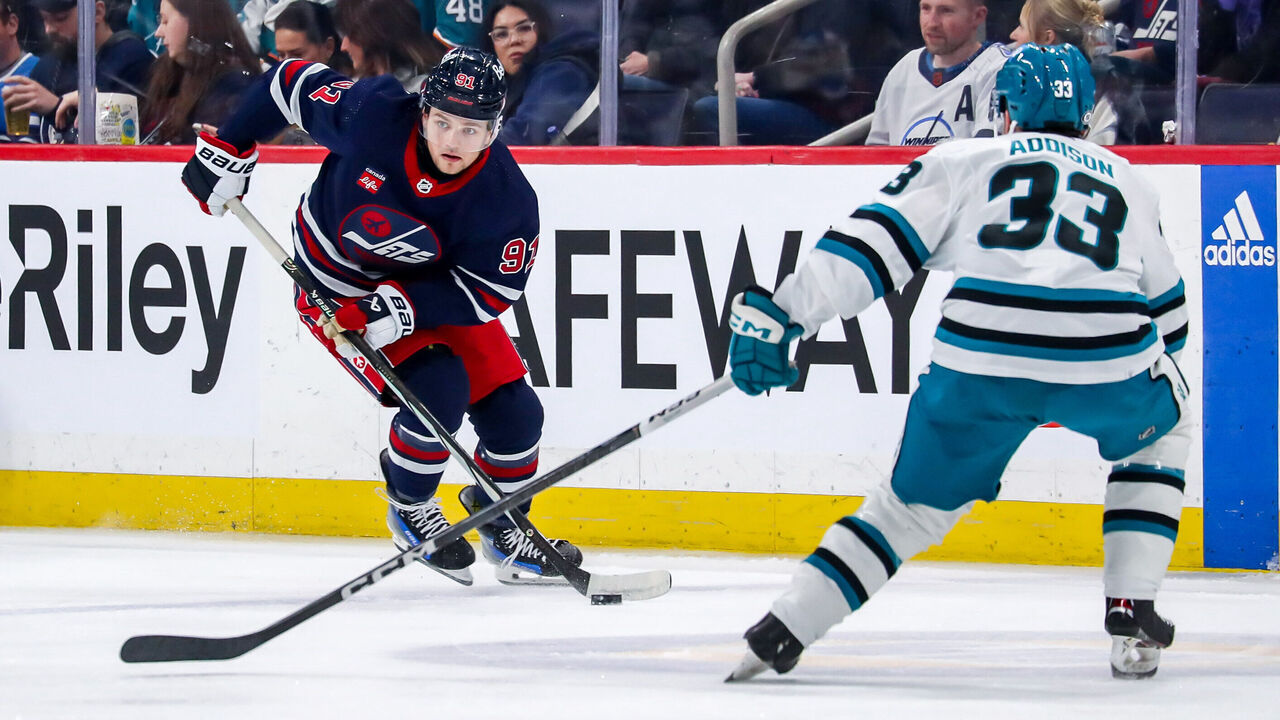
Once the winger's looked and skated, it's go time.
The first part of the "decision" step is to handle the puck with care. Fumbling it can lead to a turnover - a nightmare outcome, where the opposing team's suddenly attacking downhill, generating a deadly scoring chance.
"Sometimes it's hard and fast," Perfetti said of rimmed pucks. "Sometimes it's laying nicely on the yellow part of the boards - easy. Sometimes the puck's really spinny, which makes it difficult. Sometimes it's bouncing a bit. Sometimes the D-man is all over you. So, there's just a lot of variables."
If a direct pass to the center (like Okposo to Nielsen) isn't available, the winger has a few options. He can fire the puck to a weak-side winger or defenseman; chip it into the neutral zone; poke it back to a teammate lower in the zone; or "eat it." That last one is hockey speak for jamming the puck against the wall.
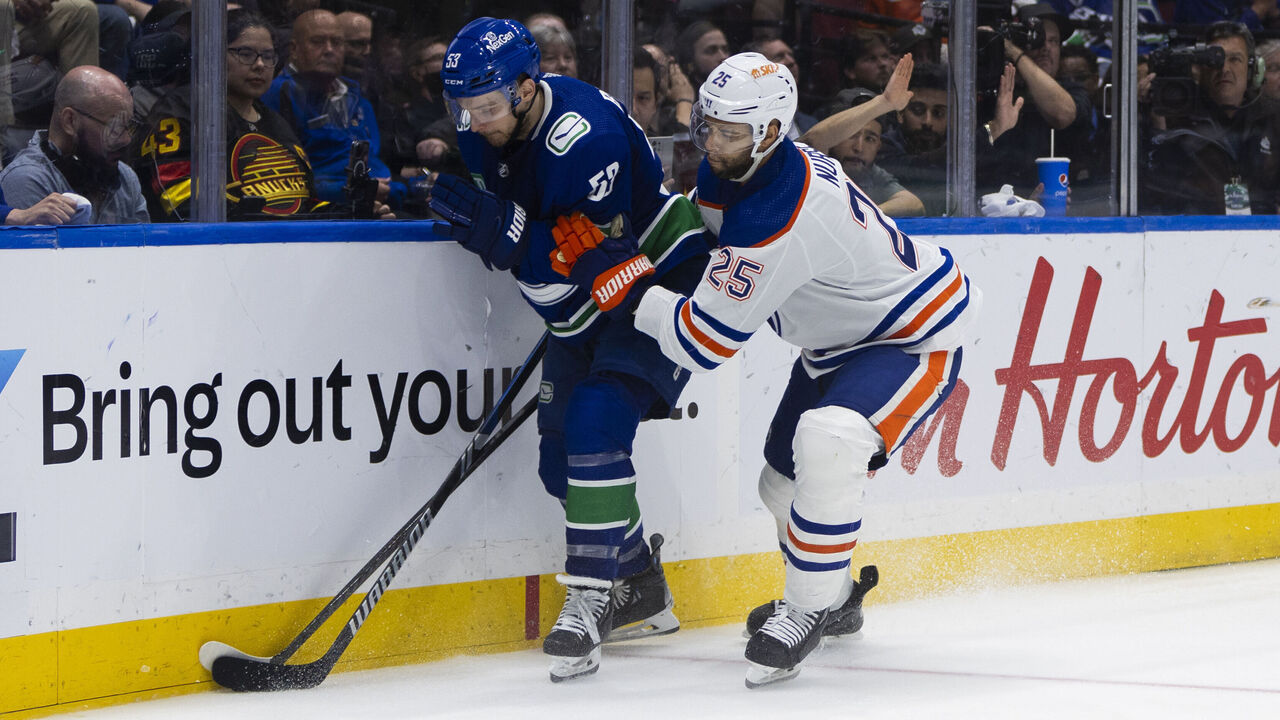
"If you can't get it over or out, just eat it," Connor said. "Hold on to it, wait for support. Get control of the situation. The alternative is having the puck pop off your stick and (go) right into the middle of the ice. That's not a good outcome."
As Goyens put it: "Sometimes you're living to fight another day. It's as simple as that. Eating it can be the right call, given what's happening around you."
Eating it can reroute the breakout, too. When the puck is wedged against the wall, a new, safer puck battle ensues. "At that point," Okposo said, "everyone comes to the puck and most of the time you'll have a D-man supporting you. You can always kick it back to them and they can go out the weak side."
Like anything in a fast-paced, chaotic sport with many player types, there's no one-size-fits-all approach to mastering wall play. But the forward must possess a certain mixture of smarts, strength, and puck skills.
The clip below shows Leon Draisaitl schooling a forechecker ahead of an Oilers goal in Game 4 against Dallas. Draisaitl excels at positioning and protection, composure in tight spaces, and passing ability.
Since wall play is so engrained in the flow of play, it's nearly impossible to quantify. Advanced stats websites don't have "best wall play" leaderboards.
However, analytics company Sportlogiq does track an "exit assist success rate" metric. It isn't a perfect measure of effective wall play but does capture a part of the process. Here are the top 20 forwards from the regular season:
Kucherov and the O-zone
Tampa Bay's Nikita Kucherov barely missed the cut on that top-20 list, which isn't a surprise. Every person interviewed for this piece, on and off the record, mentioned him as the north star of wall play, especially in the offensive zone.
The left-shooting right winger is a wizard on skates. He knows exactly what he's going to do before approaching the puck; he switches from backhand to forehand better than anyone on the planet; and chooses the perfect times to one-touch the puck to teammates. His superpower: He rarely overhandles it.
A lot of the principles for defensive-zone wall play are inverted in the offensive zone. The winger wants to get the puck into prime scoring areas. Eating it is a way to extend possessions, wear down defenders, and potentially draw a penalty. Overall, though, no matter the zone, wall play is an integral part of being a winger in the modern NHL - and nobody becomes a master overnight.
If a winger's ineffective on the walls, his teammates spend all their time in the defensive zone. If he's effective, the game opens up for the entire squad.
"It's one of the hardest skills in the game," Ducks winger Frank Vatrano said.
"Everyone always says centers are the most important people on the team. Defensemen and goalies get the same kind of love. They're praised all the time. But, if you have good wall play from your wingers, you can create a lot of offense. It's really how you become reliable as a winger in today's game."
John Matisz is theScore's senior NHL writer. Follow John on Twitter (@MatiszJohn) or contact him via email (john.matisz@thescore.com).
Copyright © 2024 Score Media Ventures Inc. All rights reserved. Certain content reproduced under license.